Sophora toromiro (Toromiro)
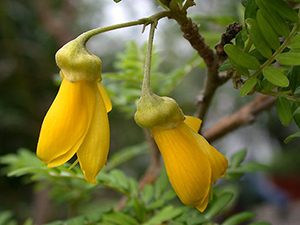
Origin of the species name
Sophora from the Arabic sofera, meaning yellowish; toromiro was the name used for the tree on Rapa Nui.
Family
Fabaceae
Date planted
January 2011
Lifespan
Unknown
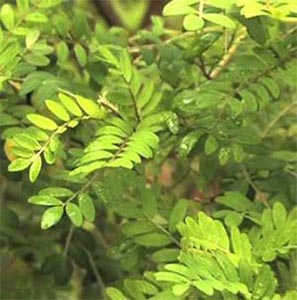
General description
This is a small tree with reddish brown bark which has vertical fissures. The compound leaves are made up of small grey-green leaflets covered on the underside by silky hairs. The yellow flowers may be up to 3 cm long, and the fruit are long brown pods. Height 6m Spread 4m.
Natural distribution and habitat
The species used to occur on Rapa Nui (Easter Island) where it once formed scattered thickets.
Conservation status
Extinct in its native habitat. Heavy deforestation eliminated most of the island's forests by the first half of the 17th century and the once common toromiro became rare and ultimately extinct in the wild. The last known wild toromiro on Easter Island was chopped down for firewood around 1960. Before it died, the Norwegian explorer, Thor Heyerdahl, managed to collect seed from this tree in 1955-56 and took it back to Europe. Research has determined that the species now descends from just two individual trees. Attempts are being made to reintroduce it to Rapa Nui, with a major program partly led jointly by the Royal Botanic Gardens, Kew, and the Gothenburg Botanical Garden in Sweden.
Planting pattern
Planted in the four central circles in a series of concentric circles and arcs.
Uses
It was once heavily used on Rapa Nui for timber and carving, but is now only found in a few gardens and arboreta around the world. Attempts are being made to reintroduce it to Rapa Nui in a project sponsored by the Royal Botanic Gardens, Kew and the Gothenburg Botanical Garden in Sweden.
Further reading
Sophora toromiro Management Group
Kew - National Botanic Gardens, Science Conservation
HOST FOREST Styphnolobium japonicum (Pagoda Tree)
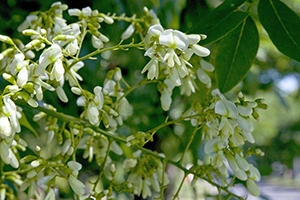
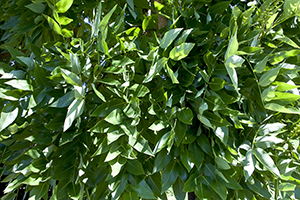
Other common names
Chinese scholar, Japanese pagoda-tree. Chinese: Huai shu.
Origin of the species name
Styphnolobium from Greek words alluding to the sour or astringent taste of the fleshy pulp of the pods; japonicum refers to the material used for the description that was cultivated in Japan.
Family
Fabaceae
Date planted
January 2011
Lifespan
Trees of this species are long lived. One of five trees planted at the Royal Botanic Gardens, Kew, in 1760, lives on.
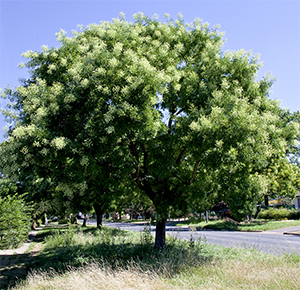
General description
This is a medium-sized deciduous tree with a crown of a similar size to its height. The young bark is pale grey, becoming furrowed into fibrous, interlaced, scaly ridges. It has bright green fern-like leaves that turn yellow in autumn. It produces an attractive display of pea-like white flowers which are often held into early summer before producing pods. Height 15m Spread 12m.
Natural distribution and habitat
The species is native to eastern Asia and mainly China where it grows in thickets and upland forest on rocky mountain slopes between 300-1000m. Despite its botanical name it does not occur naturally in Japan.
Conservation status
It is not classified as a threatened species.
Planting pattern
Planted in a series of concentric circles and arcs, with Sophora toromiro in the four central circles.
Uses
Its wood is strong and flexible, and was used for building ships and carriages, as well as for kitchen utensils and woodworking crafts. A yellow dye could be extracted by baking and boiling its flowers, and a tea made from its bark was thought to be useful in stopping bleeding and curing burns. The leaves and flowers are edible but the pods are toxic. It is planted extensively as an ornamental tree in Europe, North America and South Africa. It was on a pagoda tree in Beijing, that the last emperor of the Ming Dynasty, Chongzhen, is said to have hanged himself.
